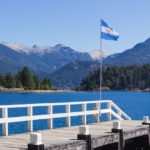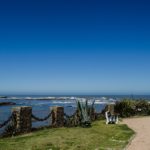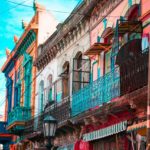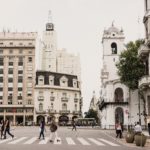Finding Jesus in Buenos Aires
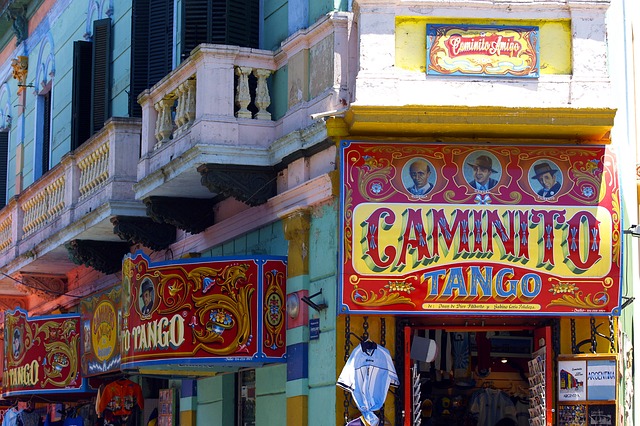
My first solo international trip was in December 2014, where my best friend and I set off to Buenos Aires, Argentina for two weeks. I got infected with the travel bug down there. It was a complete adventure, especially because we, as barely 21-year-olds, had planned, financed, and survived this crazy trip on our own.
It makes me laugh that my best friend never borrows books from the library. So, when I bent over to spy on her in the seat next to me, it was hardly a surprise that the book she was reading was in perfect condition. She caught my gaze, and pushed the book into my arms, Exploring Buenos Aires Like a Local. I skimmed through the pages, fastening my seat belt as the lights came on. I chose a couple attractions that I wanted to check out, like the zoo, the Japanese Garden, and several ice cream shops around the city. Sighing, I looked back over at her: there was just one thing I wanted.
“No museums. Promise?”
What I learned from that book in the hours before our descent was that Buenos Aires, the capital of Argentina, is often described as the Paris of South America. It was easy to pretend that I was lost in Europe standing among grand marble buildings that embodied centuries of establishment and civilization. White, blue-eyed faces populated the streets. However, the reality was that Buenos Aires was no Paris. In recent months, Argentina’s economy had plummeted, inflation gone up, and crime soared. This combination made travelling especially cheap. Pesos were exchanged for the “blue” rate; often double the official exchange rate.
Something I noticed right away was that people don’t smile at you when you make eye contact. But once you make the effort to get to know someone, they won’t stop talking.
Buenos Aires is sectioned off into barrios, or neighborhoods. Each has its own flair and is totally distinct from the others. San Telmo houses the Tango District, Recoleta is where the body of Eva Peron rests, and La Boca… is colorful, but dangerous. “Don’t go to La Boca at night, alone,” the Exploring Buenos Aires Like a Local book warned.
We chose the neighborhood of Palermo Viejo for our home. This part of the city was vibrant. At night, restaurants lit up, masses of people shopped, ate, and laughed. I noticed quickly that Argentina is a late-night culture, people light up like fireflies, dinner only starts at 11pm. In Palermo, we stayed in a B&B owned by Buenos Aires local, Ariel. Every morning hot breakfast was served until noon (people wake up late here too). Ariel sat at the table with us and chatted non-stop about his life. I knew everything about his niece before he knew my name.
Our first couple days were spent getting used to the city. We got out of our comfort zone (which initially was Ariel’s B&B) and basically walked the entire city, stopping frequently to enjoy empanadas and dulce-de-leche desserts.
Something I noticed right away was that people don’t smile at you when you make eye contact. But once you make the effort to get to know someone, they won’t stop talking. On our way back from walking around the city, I accidentally ran into a man while crossing a wrong street. “Sorry” slipped out of my mouth before I could think of the right word in Spanish. This intrigued him–foreigners! He roped us into conversation and became our tour guide. Didn’t he have places to be? Apparently not.
As uncomfortable as being left alone at the party was, it was then I found Jesus. He had a real name, but Jesus is what everyone called him. Jesus was an Argentine who spoke English with a Scottish accent.
We walked through some of his favorite bars and restaurants and spoke for more than an hour. We had to literally pull ourselves away before he said goodbye. Something else I noticed: people like to get close here. Heck, everyone cheek-kisses everyone else. In general, people just wanted to know about us wherever we went; they were fascinated that we had decided to visit Buenos Aires. At first it felt a little strange, but this quality quickly made Buenos Aires special. It took only a few days for me to open up and feel like I was a welcome part of the city.
As hard as we tried to only “explore Buenos Aires like a local,” it was impossible to resist slipping into “tourist” mode every once in a while. One night during our first week in town, we decided to overpay for a tango show. Unlike many other shows that were advertised, this one did not feature a tango lesson at the end, which is exactly why we picked it. We arrived and were ushered into what looked like a living room that had been converted into a dance studio.
The show was incredible – a male and female dancer tapped out three different stories using only their bodies, accompanied by a quartet of talented musicians. After the final dance, the lights were raised and the female dancer announced that we would have a tango lesson after all. OK, this was going to be a new experience, but I was game. Then the male dancer, who was extremely handsome, asked “who would like to dance?” I (very reasonably) thought he meant with him, so I shot my arm up. He grabbed my arm enthusiastically and pushed me directly into another guest. So, to make a long story short, instead of dancing with a beautiful Argentine that night, I danced with a sweaty dude from West Texas.
Before we knew it, it was New Year’s Eve. We were about to welcome the new year in a foreign country! In true Argentine fashion, all New Year’s parties began three hours after the ball drop at midnight. My best friend knew a guy from her previous study abroad trip, and he invited us to a party in Pilar, a suburb of the city. We were picked up and were driven to a casual house party located on a posh golf course. The house was being taken care of by a 22-year old Argentine boy. Inside was a rager with freely flowing alcohol. There was a pool, and the night (just like the people) was gorgeous. Everyone was perfectly nice and spoke English, but as the night went on, the English skills went out the window. My Spanish is mediocre at best, but I had no idea what was going on. I clung to my friend.
To make a long story short, instead of dancing with a beautiful Argentine that night, I danced with a sweaty dude from West Texas.
At some point, my friend vanished for a bit. Being alone in a new place, where I didn’t know the language, made me uneasy. As uncomfortable as those moments were, it was then I found Jesus. He had a real name, but Jesus is what everyone called him. Jesus was an Argentine who spoke English with a Scottish accent. He was a complex man and was one of the few that didn’t revert to Spanish as the party went on. Jesus went to university in the UK, travelled the world, and was hardly 22. I had never met anyone like him before, and although we met only briefly, I remember him vividly. I first realized here that, more than the place, it was the people who made any travel destination memorable and worthwhile.
I celebrated my 21st birthday shortly after New Year’s in Buenos Aires. It was our last day in the city, and as we went into the breakfast room in the B&B, Ariel saw us and darted out the door. A few seconds later, a line of maids headed by Ariel paraded into the room.
FELIZ CUMPLEAÑOS! rang through the B&B. He set a chocolate-chip muffin on my plate with a white candle stuck in the center. “All the bakeries are closed today,” he explained, “so I bought this a couple days ago.” Everyone cheered once I’d blown out the candle. The muffin had the texture of solid rock and I couldn’t manage to take a single bite. I brought the rock muffin back home to remind myself of Ariel’s kindness – it was the thought that counted.
When I left the city, I missed Buenos Aires’ soul. Over two weeks, the crowded, initially strange streets became familiar. The anxiety of the unknown faded away quickly. Long after the dust had settled onto the souvenirs I collected, the memories and feelings from the trip lingered. I brought back the confidence that I could go out on my own and travel, go directly to parts unknown and make them home, and expand my own understanding of the world.



